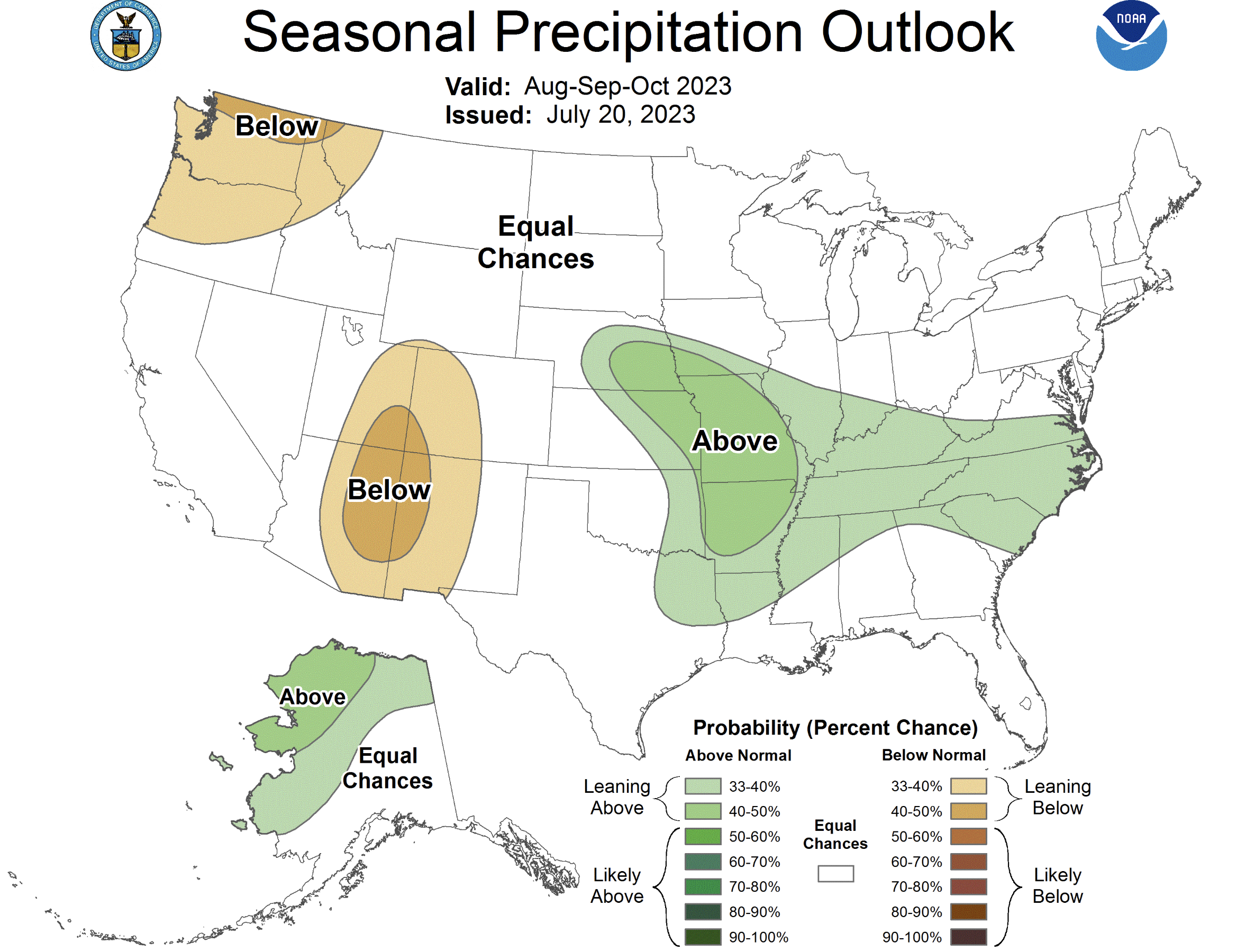Planning for Harvest ’23, What the Forecast May Bring

Looking at the late-July weather models, DTN Meteorologist John Baranick has a somewhat optimistic outlook for the rest of the growing season – as far as the forecast is concerned, starting with a relatively normal August.
“[These models] and DTN forecasts show a milder and active first half of August for much of the Corn Belt, with more heat and less rainfall for the last half of the month,” says DTN Meteorologist John Baranick.
The weather effects of El Niño have challenged weather-cycle predictions for months, coming on the heels of three straight years of La Niña conditions that built up a lot of warm western Pacific waters. “The atmosphere is still going through a transition zone, taking its time before we see a more normal El Niño circulation from September or October through the winter months,” he explains.
Since August generally is not a time to build soil moisture, much of the Midwest must rely on timely rains to make a crop due to a mid-May to mid-June dry spell that covered the Midwest quickly depleting subsoil moisture.
Outside of those abnormally dry weeks, Baranick says the Corn Belt has avoided extreme weather with corn tasseling on schedule or slightly ahead in most states. The majority of the persistent July heat was stuck in Texas, near the Gulf Coast or out west.
Some extreme drought areas shrank in Illinois, parts of Iowa and Missouri, with drought almost nonexistent in Ohio, Indiana and Michigan. “It’s just that we have no soil moisture reserves to help battle the daytime and nighttime heat,” he says.


Seasonal precipitation and temperature outlooks through October 2023
In this podcast recording with DTN, Joe Bolte, market development specialist, Corteva Agriscience, shares how this growing season’s weather impacted both crop disease and weed management — and what to be scouting for as we head into harvest season.
Baranick says current DTN forecasts indicate we’ll finally see a solid El Niño circulation in September, October and November. If it tracks along a typical El Niño pattern, expect a more active southern jet stream bringing more moisture across the southern plains, through the Southeast and up the Atlantic coast.
Overall, temperatures will be a bit on the cooler side, especially into October. For areas planted late, like North Dakota, there could be issues with early frost.
“Precipitation could cause some harvest disruption if the larger storm systems stray from their southerly track, getting pushed by the Gulf into the Midwest,” he says. “Right now, we’re not seeing any big signals for anything overly wet in the Midwest. But we see some good potential to reinvigorate soils across the South, get some moisture deeper and hopefully reduce some serious drought.”
Currently, yield modeling projections are slightly below the trendline, but not far off from the USDA July WASDE report for corn at 177.5 bushels per acre and soybeans at 52 bushels. Baranick points out there’s still a lot of yield potential for corn, depending on how this heat manifests itself through August. Soybeans have a larger yield upside, given the good rains that occurred in mid-July. “But there will always be pockets where some areas just look good where they shouldn’t, and some look terrible where they should look better,” he adds.
In South America, El Niño could help improve recent poor production in Argentina and southern Brazil. The script will flip slightly on the usually productive central Brazil area. It will still see plenty of rain, but the potential heat stress given a strong El Niño could reduce yields.
The other major weather issue with El Niño is more heat and less precipitation across eastern Australia, which could lower wheat yields by 30%, according to the recent USDA WASDE report. “They’re about midway through winter, so we’ll be watching to see if it really turns hotter and drier,” Baranick says.
Content provided by DTN/Progressive Farmer.
Find expert insights on agronomics, crop protection, farm operations and more.